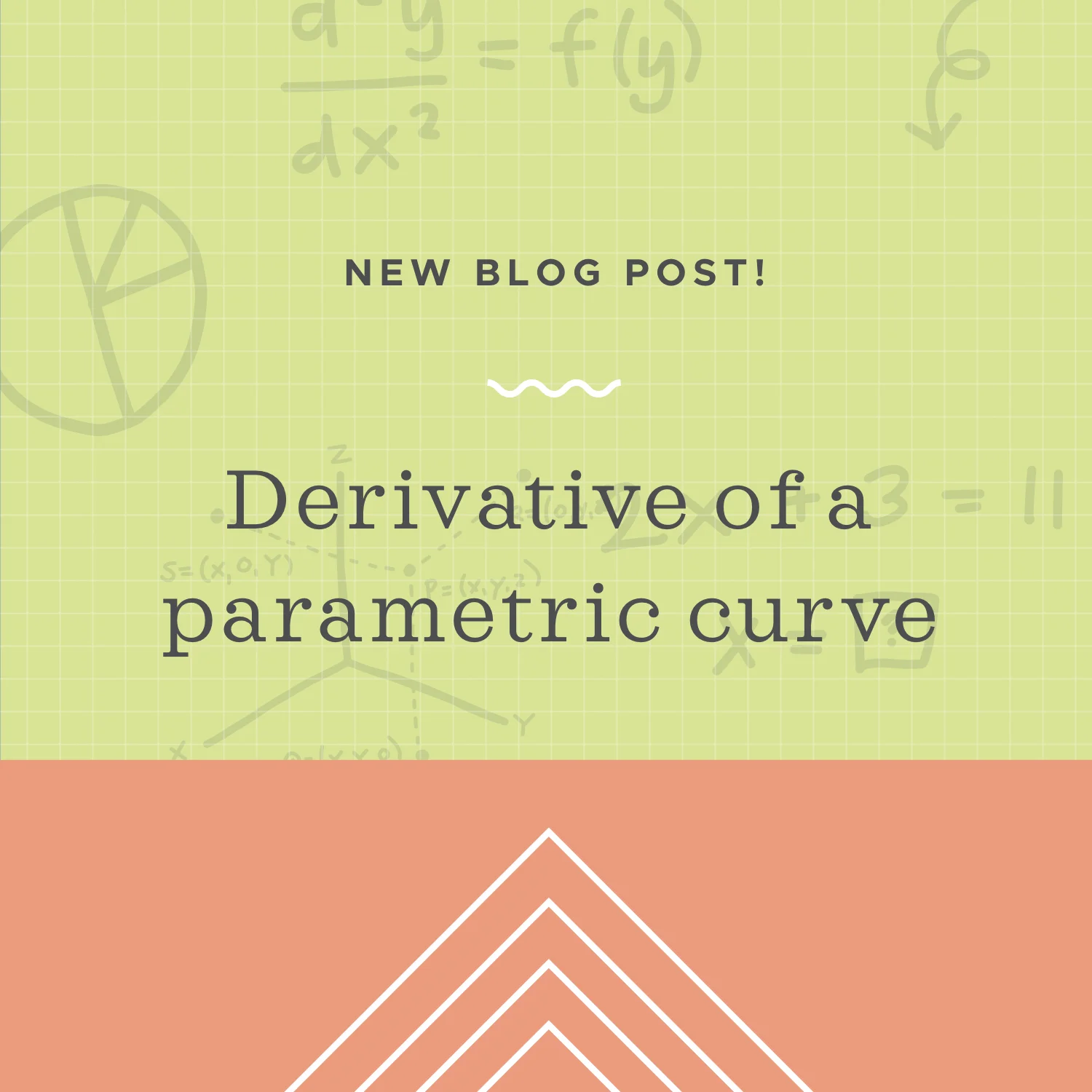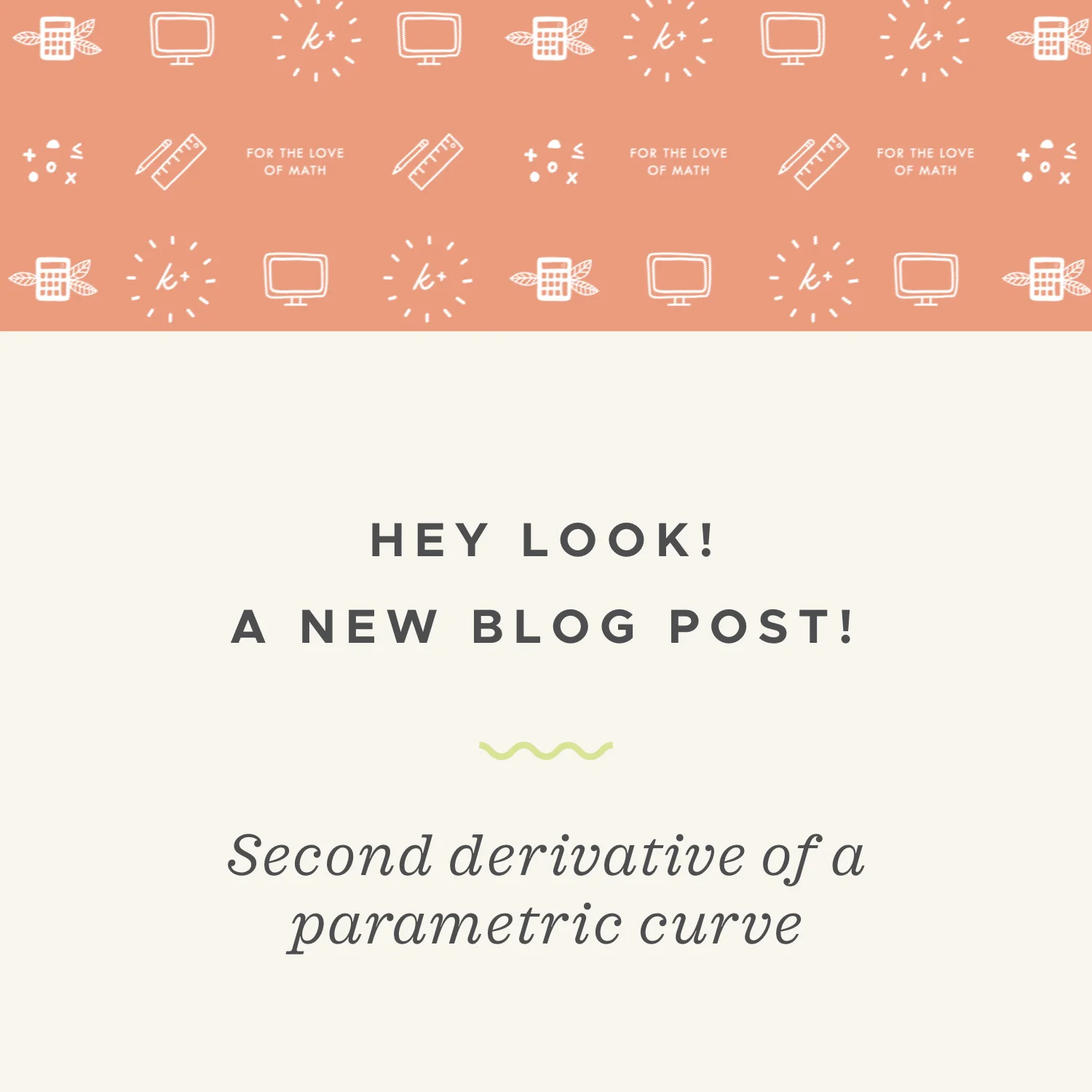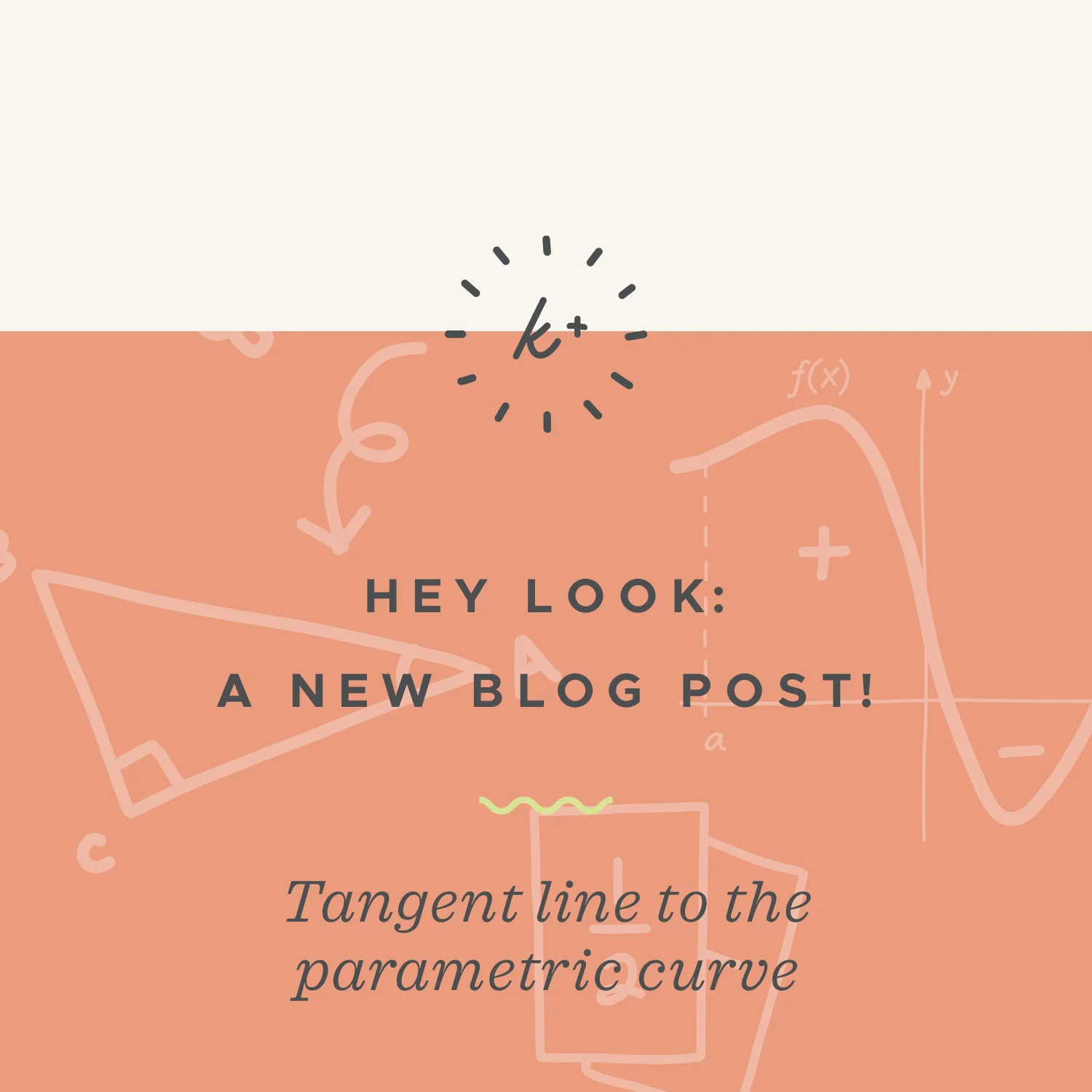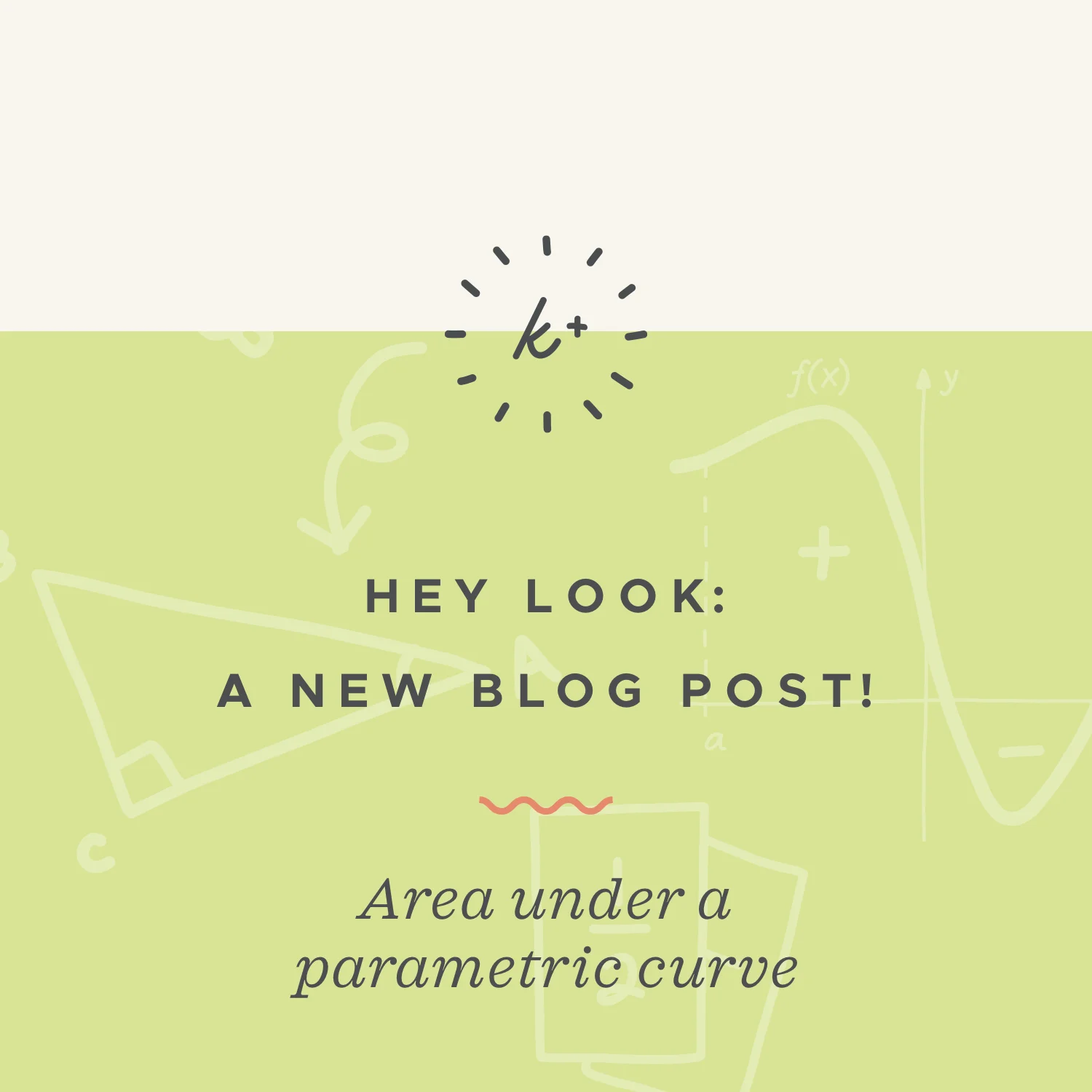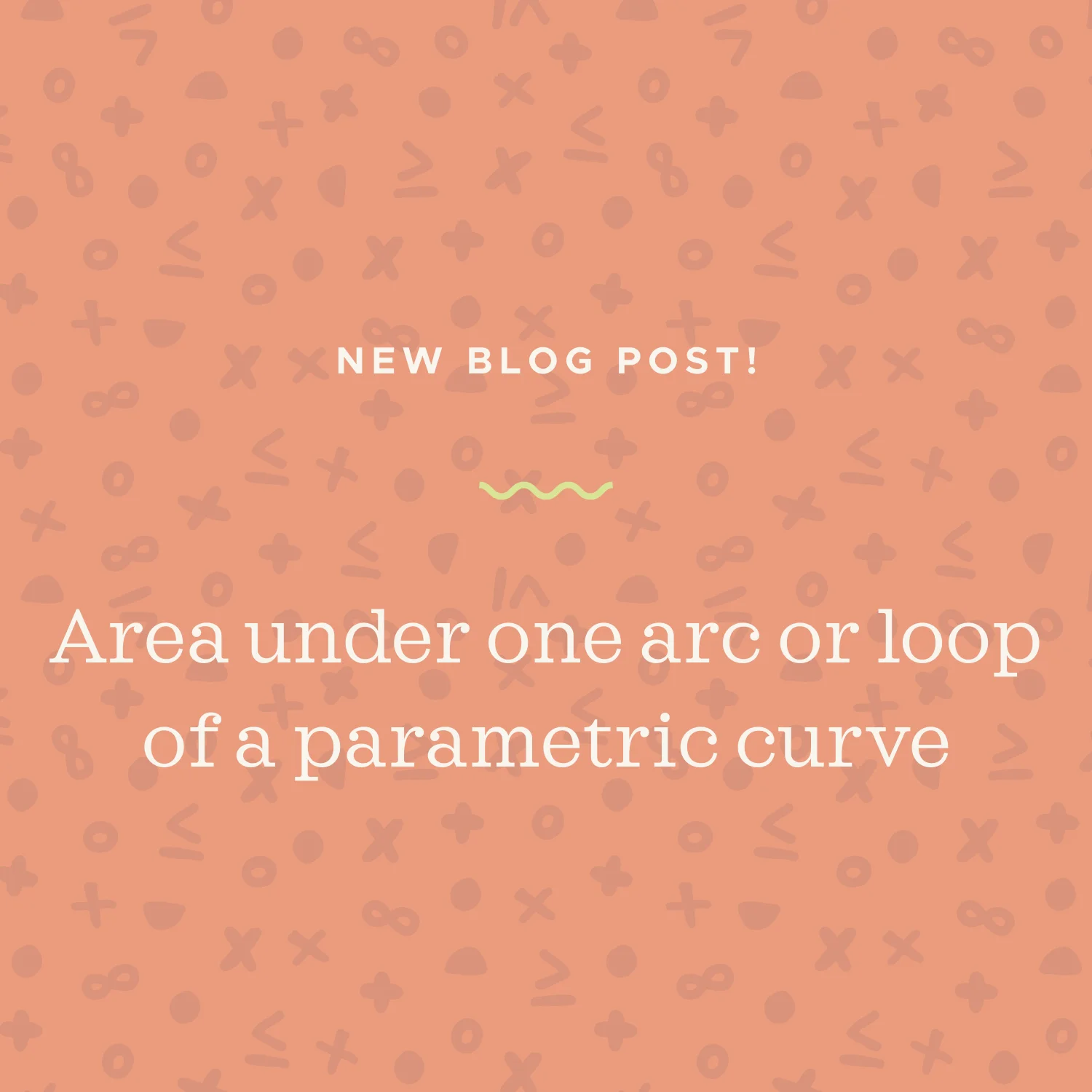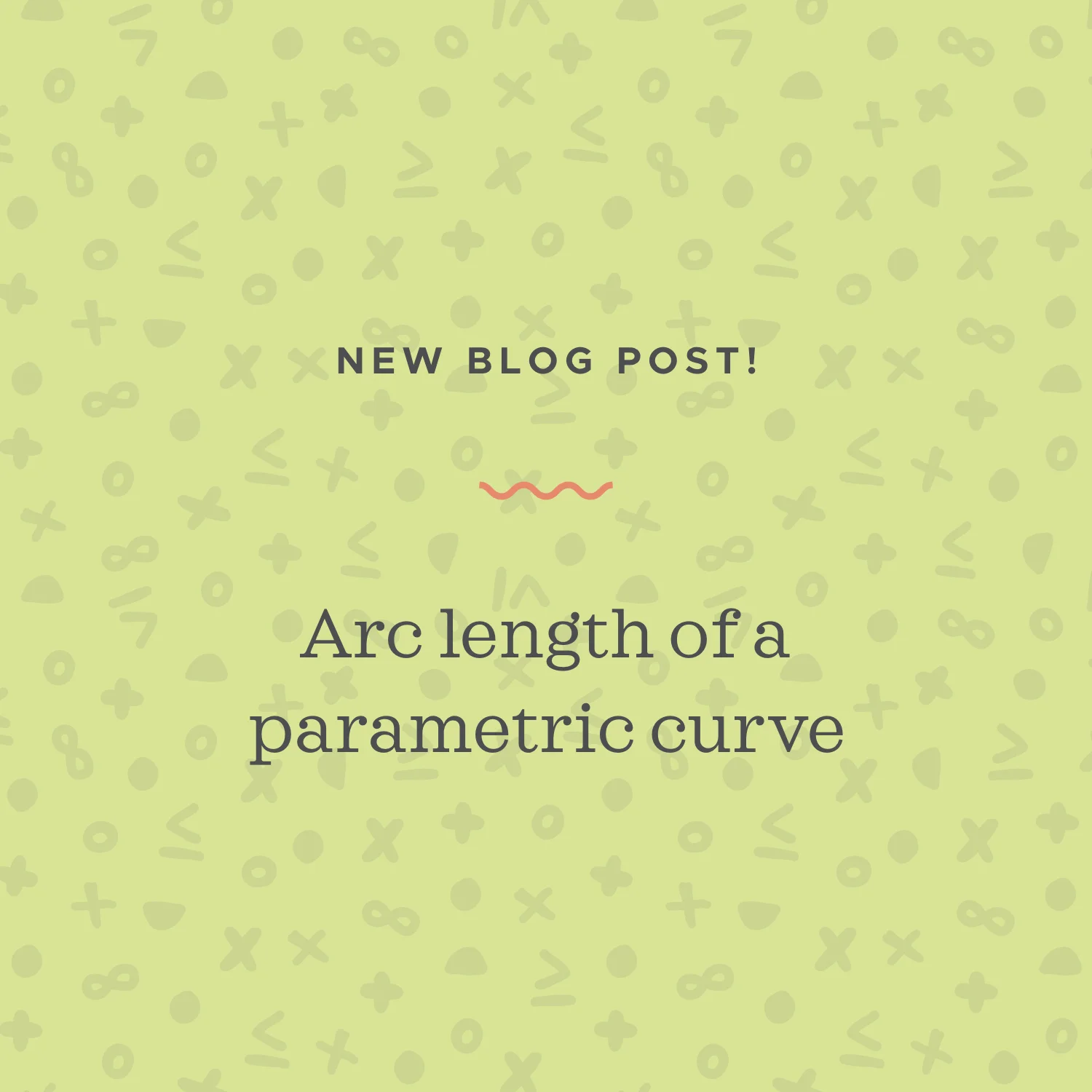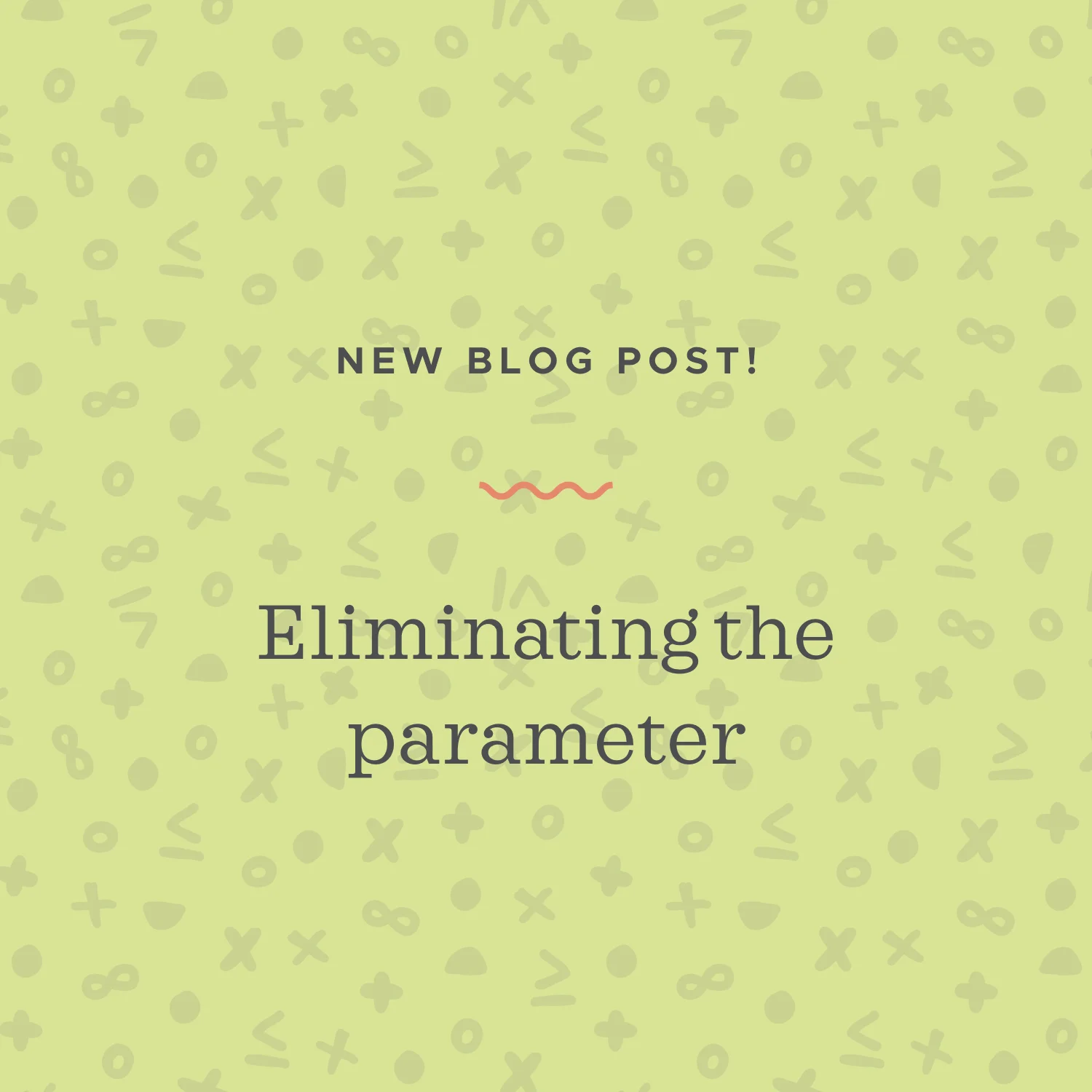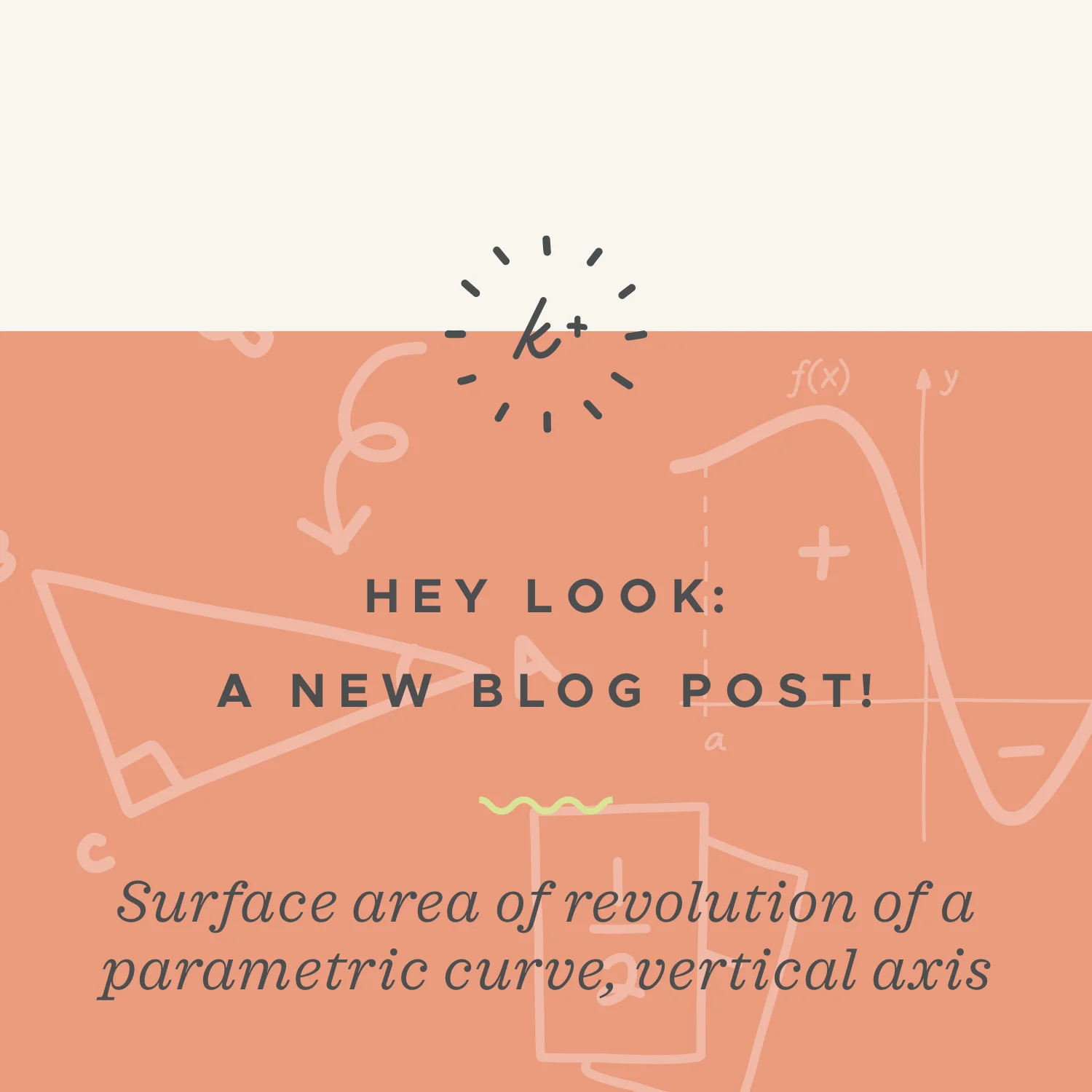Given a parametric curve where our function is defined by two equations, one for x and one for y, and both of them in terms of a parameter t, x=f(t) and y=g(t), we calculate the derivative of that parametric curve using a specific formula for the parametric derivative.
Read MoreTo find the second derivative of a parametric curve, we need to find its first derivative dy/dx first, and then plug it into the formula for the second derivative of a parametric curve. The d/dt is the formula is notation that tells us to take the derivative of dy/dx with respect to t.
Read MoreTo sketch a parametric curve, we’ll 1) Create a table where we find x- and y-values based on specific parameter values of t, 2) Eliminate the parameter to find a cartesian equation in terms of just x and y, and then 3) Sketch the parametric curve.
Read MoreWe’ll use the same point-slope formula to define the equation of the tangent line to the parametric curve that we used to define the tangent line to a cartesian curve, which is y-y1=m(x-x1), where m is the slope and (x1,y1) is the point where the tangent line intersects the curve.
Read MoreGiven a parametric curve where our function is defined by two equations, one for x and one for y, and both of them in terms of a parameter t, x=f(t) and y=g(t), we’ll calculate the area under the parametric curve using a very specific formula. The answer we get will be a function that models area, not the area itself.
Read MoreSometimes we need to find the area under just one arc or loop of a parametric curve. In order to do it, we’ll use an area formula where we integrate the product of y(t) and x’(t) over the bounds that define the loop.
Read MoreThe arc length of a parametric curve over the interval a≤t≤b is given by the integral of the square root of the sum of the squared derivatives, over the interval [a,b]. So to find arc length of the parametric curve, we’ll start by finding the derivatives dx/dt and dy/dt.
Read MoreIn this post we’ll look at how to calculate the surface area of the figure created by revolving a parametric curve around a horizontal axis. We can revolve around the horizontal x-axis, or another horizontal axis. Either way, we’ll use an integral formula to calculate the surface area, so we’ll just need to pick a set of limits for the integral over which we want to find the surface area.
Read MoreIn the same way that we could find the volume of a three-dimensional object generated by rotating a two-dimensional area around an axis when we studied applications of integrals, we can find the volume of revolution generated by revolving the area enclosed by two parametric curves.
Read MoreGiven a parametric curve where our function is defined by two equations, one for x and one for y, and both of them in terms of a parameter t, like x=f(t) and y=g(t), we can eliminate the parameter value in a few different ways.
Read MoreTo find the surface area of revolution of a parametric curve around a vertical axis of revolution, we use a particular formula, which is different than the one we use when the axis of revolution is horizontal.
Read More


